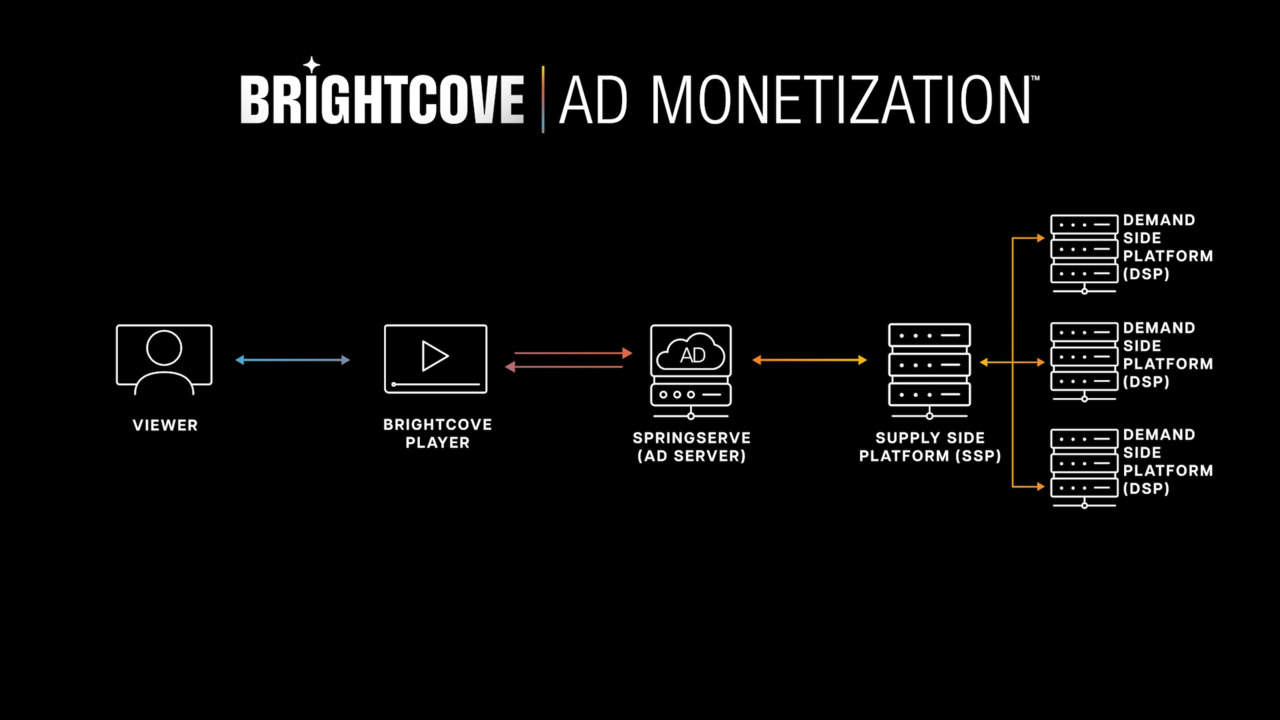Tips for Staying One Step Ahead in Your OTT Strategy
Media

THE CORD IS ALREADY CUT
Paddy Buckley, Head of Video Products and Strategy at Stuff NZ, wanted to move quickly to create a new type of video destination. His organization’s goal was to go beyond the traditional news publisher model and audience into entertainment and other areas—creating a curated collection of videos, which would appeal to Stuff’s large local audience in a brand-safe environment.
Through this expansion, Stuff would grow its audience, ad inventory, and revenue opportunity. But how would Paddy get his OTT experience to market, across many devices, on his aggressive timeline?
With the number of subscriptions to video on-demand services globally expected to top 947 million by 2024—more than twice the number of subscriptions there were in 2018—many content owners and licensors are considering the many paths to executing their OTT experiences.
It’s become increasingly clear that media companies must go beyond linear broadcasts to meet viewers’ changing appetites. In fact, the 2019 edition of Deloitte’s annual Digital media trends survey found that—for the first time in their results—more people have at least one video streaming subscription (69%) than have a traditional pay TV subscription (65%). But just as the pool of OTT viewers is growing, the market is becoming increasingly crowded. While just how many new streaming services are launching every year is a tough number to pinpoint, conventional wisdom suggests there should be at least 500 new OTT platforms rolling out annually for the next three years or so. Last year, in the U.S., for example, there were 20 services launched (the high was 67 in 2015, according to Parks Associates).
This year is likely to challenge the 2015 high, as there have been a swarm of OTT players entering the market. More and more household names—from Disney to Apple— are releasing OTT offerings, making today’s streaming wars the most competitive yet.
YOUR VIEWERS ARE EVERYWHERE—ARE YOU?
Now, more than ever, it’s crucial that you build and retain a pool of loyal viewers and subscribers—and to do this you must provide a combination of high-quality content and a frictionless user experience.
In order to stake your claim in today’s rapidly changing OTT marketplace, you need to keep your viewers’ attention by understanding their preferences—and staying one step ahead of the competition.

REACH YOUR AUDIENCE, WHEREVER THEY ARE
In order to launch and grow a successful OTT service in today’s competitive market, you need to define a compelling content strategy— and execute on it to achieve the best results.
Today’s viewers consume content on four main screens: connected TVs or smart TVs, smartphones, tablets, and personal computers. While all types of content can be watched on every device, each screen also has a special role in the consumer’s overall video experience. Media owners need to distribute their content across this four-screen canvas to drive loyalty and engagement; it’s critical that you find a way to program each screen experience efficiently and scalably. When designing your distribution roadmap, you must understand the strengths of each screen.

DESIGN YOUR DISTRIBUTION ROADMAP
Consider the following factors to define the right distribution strategy for your business:
• Your audience’s media preferences: Which devices and apps do your target viewers use to stream each type of content they consume? When do they lean back and when do they view on-the-go
• Your audience’s viewing behavior: How do your target viewers prefer to consume video? Are they binge watchers? Do they typically stream content at a particular time of day?
• Your content strategy: Will you offer live and/or video-on-demand content? How much content do you plan to offer, and what underlying technology do you need to scale?
• Your audience’s location: What are the internet and device trends in your region? What languages does your audience use?
Mapping out a comprehensive four-screen distribution strategy that takes advantage of the particular strengths of each screen will empower you to provide a consistent, premium experience across devices—making it easier than ever for viewers to engage with your content.
GO BEYOND MOBILE
It’s clear that the “lean-back” experience—in which a viewer watches content on a large screen that is several feet away—is back. In fact, the findings from our 2018 Global Consumer Streaming Habits Survey indicated that many live video viewers most often use a TV to consume most types of content, including regularly scheduled news (60%), regular season sports (50%), breaking news (50%), special sports events (47%), concerts (36%), and fashion shows (19%).
Given these consumer preferences, it’s no surprise that the smart TV market is growing rapidly. According to the Smart TV Market: Global Industry Trends, Share, Size, Growth, Opportunity and Forecast 2019-2024 report, the global smart TV market reached a value of $143 billion in 2017. And this value is expected to grow to $253 billion by 2023—exhibiting a CAGR of around 10% during 2018 to 2023.
CHOOSE THE RIGHT MONETIZATION MODEL FOR YOUR BUSINESS
In today’s OTT climate, viewers remain fairly torn regarding which monetization model they prefer. According to our 2018 Global Consumer Streaming Habits Survey, 30 percent of global consumers would prefer an ad-based model for TV shows/movies, while 23 percent would prefer a subscription model for TV shows/movies.
For viewers who prefer to pay with their time (through watching ads) rather than their money (via a subscription), ad-supported video on demand (AVOD) services remain a popular option. Due to the lack of financial commitment, AVOD can serve as a powerful acquisition model. AVOD also allows for precise, user-level targeting—making the video inventory attractive to advertisers and lucrative for content owners.
Pioneered by Netflix and Amazon Prime, subscription video on demand (SVOD) offers a more predictable stream of income for content owners. SVOD viewers are willing to pay for OTT experiences with reduced or no ads—if they find the content offerings valuable and appealing. When choosing the right monetization model for your OTT service, there are a few factors that you should keep in mind:
• Your content catalog: If you have an incredibly engaged and passionate audience (and some scarcity with the content you have rights to), SVOD is a better option.
• Your audience’s location: In some regions of the world, content pirating is rampant, making AVOD the smarter choice.
• Your budget: As SVOD services traditionally survive by offering unique—often original—content, they come with a high cost of customer acquisition and retention. The most successful SVOD services also require a large marketing budget to engage their customers in new content (and use their viewing habits to suggest additional content).
And, perhaps most importantly, you should ask yourself if you’ll have enough viewers to justify a subscription service at the onset. If not, it may be better to start off with an AVOD model to attract viewers—and transition to a subscription model over time if it makes sense for your business.

EMERGING BUSINESS MODELS
While AVOD and SVOD remain the two primary revenue models commonly used by OTT content providers, a few other business models are entering the scene and becoming increasingly popular.
Hybrid: Some OTT services have begun to adopt a hybrid approach— providing both a “freemium” ad-supported service and a premium subscription offering. This creates a soft transition for converting an audience over to a subscription model. Providers can take this strategy a step further by offering tiered subscription models and gating certain content so that only users who are willing to pay a premium can access it.
Transactional Video on Demand (TVOD): Another strategy is to allow users to sign up for or download the service at no cost, but require the purchase of content on a per-title basis through a third-party authentication and payment service. This model is popular for long-form movie content or live pay-per-view content, such as a sporting event.
TV Everywhere (TVE): Also known as Authenticated VOD (AuthVOD), TVE requires users to log in using credentials from another platform, service, cable, or cellular subscription in order to access content. This model is valuable when coordinating with partnerships or managing multiple properties or branded services.
CONSIDER YOUR AUDIENCE’S AD TOLERANCE
If you choose to implement an ad model, make sure you develop a strategy that offers an ad experience that viewers don’t find off-putting—while still providing innovative ad options for advertisers. Increasingly, ad-supported services are looking to enable users to personalize their ad experience, and are experimenting with capping ad blocks at certain time limits below those of traditional broadcasters and pay-TV services. Those lower ad loads are generally more acceptable to viewers.
EXPERIMENT WITH DIFFERENT PACKAGES
If you’re leveraging an ad model, explore and test which ad plans resonate best with your customer base. For instance, you could consider a model in which you serve ads during weekday streaming and limited ads or no ads on the weekends (or vice versa).
On the SVOD side, consider experimenting with a mix of packages that offer limited and no ads as an alternative to a traditional subscription plan—allowing users to choose which price plan suits them. Though most SVOD service providers have set the expectation that consumers will receive zero ads in exchange for a set price to view content, it’s important to remember that revenue from SVOD alone might not be sustainable in the long term.

ESTABLISH A LOYAL AUDIENCE
During our recent annual PLAY conference, online marketing strategist David Meerman Scott spoke about “fanocracy,” or “the idea of turning fans into customers and customers into fans.” Scott stressed that in our current world of digital chaos, it’s more important than ever that organizations of all shapes and sizes cultivate true fans—which involves going beyond superficial online communications and becoming more than your product or offerings. “Fanocracy is built on the experiences of its members, not limited to the imagination of one creator.”
Are you ready to build a pool of loyal fans? Take the steps below to ensure you’re providing the premium experience that your viewers seek (and expect).
EMPLOY A/B TESTING TO DESIGN AN EASY-TONAVIGATE INTERFACE

In order to provide the most intuitive, desirable user experience for your audience, you must conduct regular A/B testing. During this process, you can determine the best possible experience for viewers by testing different UI elements—which may include layouts, branding elements, menu structures, and fonts. By taking a data-driven approach and employing multivariate testing, you can develop a solid understanding of what is and isn’t working—empowering you to make informed decisions about providing the desired user experience.
CREATE A CONSISTENT EXPERIENCE ACROSS DEVICES
Of course, building a pool of devoted subscribers and viewers involves providing a premium streaming experience everywhere. Once you’ve conducted your A/B testing, leverage the actionable insights you gained from this data to continually optimize your offerings on every device. By creating a consistent experience on every screen, you can make it easier than ever for your viewers to find and engage with your content. Once they master your user interface, they’ll be able to follow the same processes and user paths—no matter where they’re watching.
Video quality also comes into play here. Today’s viewers have higher streaming expectations than ever before, and it’s critical that you meet (and exceed!)them on a daily basis. By consistently providing a high-quality stream on every device, you can establish trust, increase engagement, and boost your bottom line.

REDUCE CHURN
Once you have an established network of viewers, you’ll need to continually work to grow your audience. And in order to do so, you must understand different OTT churn metrics and how to reduce your churn rate. After all, it doesn’t matter how many new users you acquire if they churn early or often.
First off, it’s important to know the difference between the two types of churn: voluntary and involuntary. You categorize churn as voluntary when users purposefully cancel their subscriptions. For instance, this applies if a user has canceled after binge-watching the entire series that they have signed up to watch. On the other hand, churn is involuntary when the user has churned unintentionally. This may occur when the user’s payment method has expired or their transaction has been declined.
VOLUNTARY CHURN
Unsurprisingly, various metrics come into play as you decide how to tackle voluntary churn. If engagement is poor and users are abandoning videos halfway through, you may need to improve or reassess your content.
On the other hand, if users are downloading your app and abandoning it without starting any videos at all, that tells you something about the user experience. How about users that go for long stretches of time without opening the app at all? In that case, maybe the answer is push notifications that reel them back in.
Reducing voluntary churn often comes down to resolving three main issues:
• Content: Having a compelling library of rotating content is essential. If your library is stagnant, viewers will assume they have seen all the content they might like.
• User experience: If your users have a hard time finding the content that is meaningful to them, or your app is performing poorly, they’re going to spend less time there. Low engagement times are a high indicator of negative experience and potential churn.
• Engagement: Engaging with your users is essential. If you’re adding new content that they might like, why not tell them? A push notification that you have new episodes of their favorite show isn’t a nuisance; it’s an improvement on their experience with your service.
INVOLUNTARY CHURN
The easiest way to reduce involuntary churn is to partner with a service that automates the process. These partners will notify users when their payment on file is nearing expiration, so they can make an update without a lapse in their subscription.
Some services take it a step further by communicating with the banking system on the back end to automatically update credit card information when a new card is issued. Changes like these may seem small—but reducing churn by even one or two percentage points can have a massive impact on revenue down the line.
Overall, it’s crucial that you compare your user acquisition, or conversion rate, with your churn rate on a month-over-month basis in order to know where to focus your efforts. If the churn trend month-over-month is steady and reasonable—in other words, you’re retaining most of your existing users—you’re free to focus on acquiring new users. However, if churn is trending up—let’s say toward 20 percent—you’ve got a problem on your hands and you’ll need to take the steps described above to reduce churn and continue growing your user base.

CAPTURE YOUR SHARE
In an age when viewers have increased expectations and growing appetites to watch content on an ever-growing list of devices, we at Brightcove believe that it’s more important than ever for you to be able to reach your audience—wherever they are. We understand that competing in today’s highly saturated OTT landscape requires you to get to market quickly—and our OTT offerings empower you to do just that.
Whether you’re new to the content distribution space or you already have an established subscriber base, we have an OTT solution to meet your needs. With Brightcove Beacon™, our SaaS-based OTT platform, you can launch captivating, consistent experiences for web, mobile, smart TVs, and connected TVs in record time. With OTT Flow, our premium turnkey solution, you can eliminate the need for custom development and launch world-class OTT services quickly and easily. Learn more about Brightcove OTT experiences.



